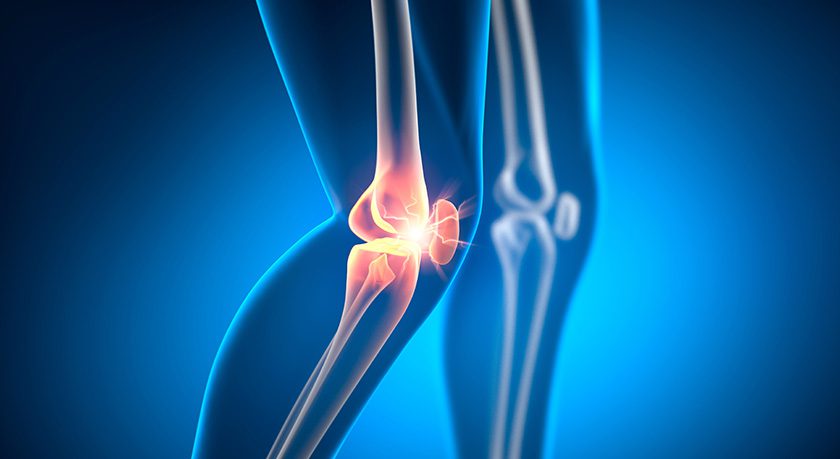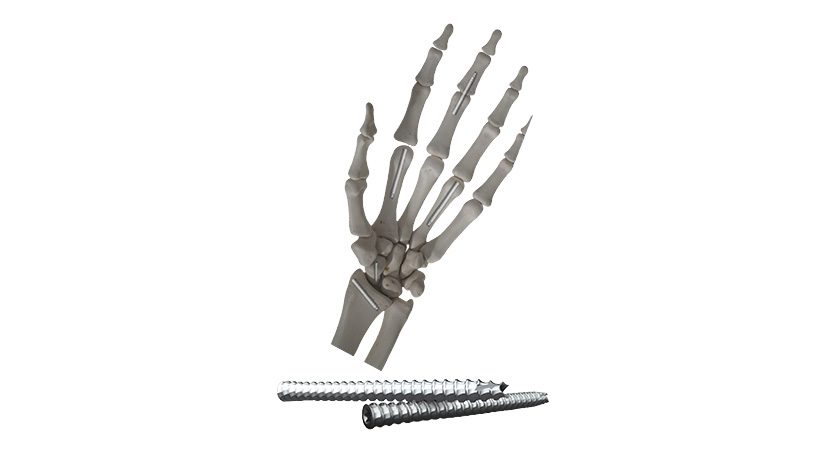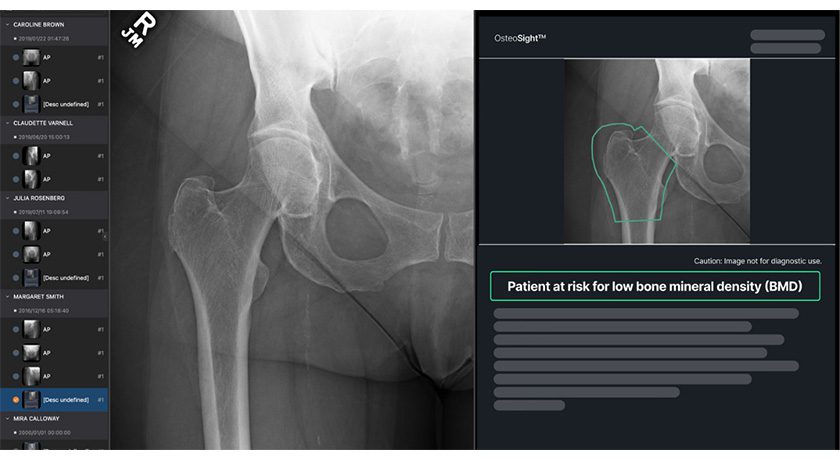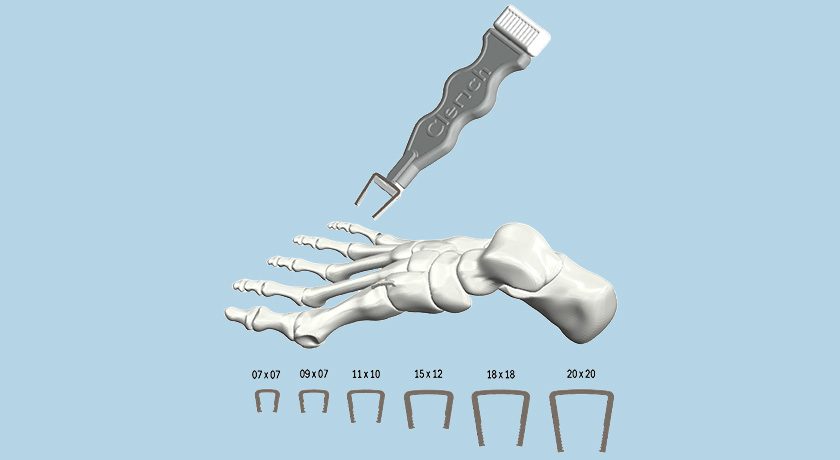

 Copy to clipboard
Copy to clipboard 
Osteoarthritis (OA) is a degenerative joint disease most commonly affecting the knee (KOA) and the hip. KOA is characterized by the progressive loss of articular cartilage, leading to pain, stiffness and functional impairment. According to the Arthritis Foundation, over 32 million people suffer from symptomatic OA in the United States alone, with prevalence expected to further increase as the population continues to age (i.e. the youngest Baby Boomers are now over 60).
KOA is managed by a diverse array of treatment modalities depending on severity. Non-surgical treatment remains the preferred first-line therapy, which includes conservative measures such as physical therapy and oral NSAIDs, to interventional approaches such as intra-articular corticosteroid and hyaluronic acid (HA) injections. More recently, platelet rich plasma (PRP) and adipose tissue injections have captured attention and market share, driven by a clinical need for more efficacious solutions compared to mainstay steroid/HA injections and patient desire for “regenerative medicine” solutions.
At the opposite end of the spectrum, total and partial knee replacements remain the standard treatments for advanced or end-stage KOA. However, due to their high economic costs, recovery demands and functional limitations following these procedures, patients and payors eagerly await less invasive alternatives.
Against this backdrop, there is an active product development “ecosystem” of researchers and companies seeking to develop next-generation, minimally invasive treatments that fundamentally change the treatment paradigm in KOA.
R&D Landscape in KOA
Currently, there are over 90 unique minimally invasive injectable products under active, industry-driven development for the U.S. market, ranging from preclinical assets to those being evaluated in large Phase III clinical trials. Collectively, this group of product candidates spans a wide array of technologies, including cell and gene therapies, novel biomaterials, human tissue, proteins, small molecules and many others.
The four programs highlighted below are the most developmentally mature, with each having the potential to obtain FDA approval in the 2026-2028 timeframe.
Anika Therapeutics (Cingal)
Cingal is positioned as a third-generation, single injection viscosupplement that combines the company’s proprietary Monovisc HA with triamcinolone, a fast-acting corticosteroid to manage inflammation. Cingal has been available internationally since receiving CE Mark approval in 2016 and has achieved commercial success abroad.
Despite this lengthy commercial history and establishing clinical performance across three Phase III clinical trials, the regulatory approval process for Cingal in the United States has proven more challenging. Over the last several years, Anika has navigated a series of challenges tied to FDA’s regulation of the product, which has thwarted its introduction into the U.S. market.
While Cingal’s regulatory status in the U.S. remains in flux, Anika continues to make progress at addressing FDA’s concerns. We expect to learn more about the success of Anika’s efforts by year end along with guidance regarding the timing for a New Drug Application (NDA).
Lipogems
Lipogems is an Italian-based company actively marketing a point-of-care disposable device for autologous adipose tissue therapy in a wide variety of clinical settings. The company refers to the device’s production of MicroFragmented Adipose Tissue (MFat) as a biologic therapy obtained from the patient’s own adipose tissue. Following a simple lipoaspirate procedure, adipose tissue is transferred to the Lipogems system, which rinses, resizes and processes the tissue into micro-fragments to facilitate smooth injection through a fine gauge needle.
In the setting of KOA, Lipogems is intended to provide cushioning and improve lubricity in the joint, like a standard HA injection. Additionally, intact cells within the MFat further contribute anti-inflammatory and pro-regenerative effects. The Lipogems system has FDA 510(k) clearance as a device for processing adipose tissue, however the company seeks specific claims, only available through a PMA, about how the device output can be used to manage KOA.
Lipogems has sponsored two 173-patient pivotal studies to evaluate the performance of the product compared to both corticosteroid and saline at 12-months post-treatment. Readouts from these clinical results are expected later in 2025.
Kolon TissueGene (TG-C)
TG-C is an injectable combination cell and gene therapy comprising allogeneic human chondrocytes and genetically modified human kidney cells engineered to express TGF-b. Both components are intended to work in concert to promote cartilage growth, reduce inflammation and alleviate pain.
TG-C has the potential to be the first FDA approved DMOAD (disease-modifying osteoarthritis drug), which is one that modifies the underlying course of KOA, demonstrated by long-term improvements in joint structure and corresponding pain and function improvements.
TG-C is under evaluation in two 500-patient pivotal clinical trials with study readouts expected by the middle of 2026. The endpoints for both pivotal trials include pain and function outcomes at 12 months and longer-term endpoints to evaluate structural changes in the knee, cartilage integrity and joint space width to support DMOAD claims.
Organogenesis (ReNu)
ReNu is an injectable suspension of cryopreserved amniotic fluid cells and micronized amniotic membrane obtained from donated tissue.
Prior to 2021, ReNu was commercially available and marketed as an exempt Section 361 HCT/P. Following changes to FDA’s regulation of human tissue, Organogenesis developed ReNu as a biologic product (overseen by FDA’s Center for Biologics Evaluation and Research) and seeks claims for its use in the management of knee OA.
Organogenesis has completed two 474-patient pivotal trials comparing ReNu to saline placebo injections. Top line results from the first of these two studies demonstrated statistically significant reduction in knee pain and maintenance of function at six months. Results from the second study are forthcoming and will be shared in September 2025. Based on these results, Organogenesis intends to submit its BLA for marketing approval before year end.
In Summary
KOA continues to be a major societal health and economic burden requiring new patient solutions. The outlook for this treatment area is promising, with multiple technologies poised at the precipice of FDA approval in the near term.
That said, in just the last two years, our industry has seen multiple other products fail to achieve statistically significant results capable of supporting FDA approval through the PMA or BLA pathways, and those companies either went bankrupt, restructured to prioritized other targets, or sold the therapeutic technology to other firms for alternative uses. In all cases, however, lessons can be learned from watching those around us fall short of meeting expectations, and these are often related to clinical study design, patient management, manufacturing variability not accounted for, and at worst, the brutal reality that “wishful thinking” is not a plan.
Fortunately, there is an extensive pipeline of more than 80 other next-generation therapies in development with the potential to provide long-term pain relief, defer the need for total knee replacement and support meaningful disease modification. We are committed to seeing more than one new solution reach the market and encourage investors and sponsors to learn as much as they can about both the current competitive environment and what caused those who came before them to miss the mark.
Jim Petricek, MSE, MBA is a Vice President at the Bruder Consulting & Venture Group (BCVG), where he has worked for 9 years helping companies navigate the orthobiologic product development journey and carefully tracking the competitive landscape of literally hundreds of products in the areas of osteoarthritis, cartilage defect repair, intervertebral disc regeneration, bone grafting, soft tissue reinforcement and wound repair.
Scott Bruder, M.D., Ph.D., FORS is the Founder and CEO of BCVG, which began providing expert guidance and tactical support in 2015. Together with their colleagues, the team has completed over 800 projects for more than 150 Client Partners in the field of Regenerative Medicine.
Osteoarthritis (OA) is a degenerative joint disease most commonly affecting the knee (KOA) and the hip. KOA is characterized by the progressive loss of articular cartilage, leading to pain, stiffness and functional impairment. According to the Arthritis Foundation, over 32 million people suffer from symptomatic OA in the United States alone, with...
Osteoarthritis (OA) is a degenerative joint disease most commonly affecting the knee (KOA) and the hip. KOA is characterized by the progressive loss of articular cartilage, leading to pain, stiffness and functional impairment. According to the Arthritis Foundation, over 32 million people suffer from symptomatic OA in the United States alone, with prevalence expected to further increase as the population continues to age (i.e. the youngest Baby Boomers are now over 60).
KOA is managed by a diverse array of treatment modalities depending on severity. Non-surgical treatment remains the preferred first-line therapy, which includes conservative measures such as physical therapy and oral NSAIDs, to interventional approaches such as intra-articular corticosteroid and hyaluronic acid (HA) injections. More recently, platelet rich plasma (PRP) and adipose tissue injections have captured attention and market share, driven by a clinical need for more efficacious solutions compared to mainstay steroid/HA injections and patient desire for “regenerative medicine” solutions.
At the opposite end of the spectrum, total and partial knee replacements remain the standard treatments for advanced or end-stage KOA. However, due to their high economic costs, recovery demands and functional limitations following these procedures, patients and payors eagerly await less invasive alternatives.
Against this backdrop, there is an active product development “ecosystem” of researchers and companies seeking to develop next-generation, minimally invasive treatments that fundamentally change the treatment paradigm in KOA.
R&D Landscape in KOA
Currently, there are over 90 unique minimally invasive injectable products under active, industry-driven development for the U.S. market, ranging from preclinical assets to those being evaluated in large Phase III clinical trials. Collectively, this group of product candidates spans a wide array of technologies, including cell and gene therapies, novel biomaterials, human tissue, proteins, small molecules and many others.
The four programs highlighted below are the most developmentally mature, with each having the potential to obtain FDA approval in the 2026-2028 timeframe.
Anika Therapeutics (Cingal)
Cingal is positioned as a third-generation, single injection viscosupplement that combines the company’s proprietary Monovisc HA with triamcinolone, a fast-acting corticosteroid to manage inflammation. Cingal has been available internationally since receiving CE Mark approval in 2016 and has achieved commercial success abroad.
Despite this lengthy commercial history and establishing clinical performance across three Phase III clinical trials, the regulatory approval process for Cingal in the United States has proven more challenging. Over the last several years, Anika has navigated a series of challenges tied to FDA’s regulation of the product, which has thwarted its introduction into the U.S. market.
While Cingal’s regulatory status in the U.S. remains in flux, Anika continues to make progress at addressing FDA’s concerns. We expect to learn more about the success of Anika’s efforts by year end along with guidance regarding the timing for a New Drug Application (NDA).
Lipogems
Lipogems is an Italian-based company actively marketing a point-of-care disposable device for autologous adipose tissue therapy in a wide variety of clinical settings. The company refers to the device’s production of MicroFragmented Adipose Tissue (MFat) as a biologic therapy obtained from the patient’s own adipose tissue. Following a simple lipoaspirate procedure, adipose tissue is transferred to the Lipogems system, which rinses, resizes and processes the tissue into micro-fragments to facilitate smooth injection through a fine gauge needle.
In the setting of KOA, Lipogems is intended to provide cushioning and improve lubricity in the joint, like a standard HA injection. Additionally, intact cells within the MFat further contribute anti-inflammatory and pro-regenerative effects. The Lipogems system has FDA 510(k) clearance as a device for processing adipose tissue, however the company seeks specific claims, only available through a PMA, about how the device output can be used to manage KOA.
Lipogems has sponsored two 173-patient pivotal studies to evaluate the performance of the product compared to both corticosteroid and saline at 12-months post-treatment. Readouts from these clinical results are expected later in 2025.
Kolon TissueGene (TG-C)
TG-C is an injectable combination cell and gene therapy comprising allogeneic human chondrocytes and genetically modified human kidney cells engineered to express TGF-b. Both components are intended to work in concert to promote cartilage growth, reduce inflammation and alleviate pain.
TG-C has the potential to be the first FDA approved DMOAD (disease-modifying osteoarthritis drug), which is one that modifies the underlying course of KOA, demonstrated by long-term improvements in joint structure and corresponding pain and function improvements.
TG-C is under evaluation in two 500-patient pivotal clinical trials with study readouts expected by the middle of 2026. The endpoints for both pivotal trials include pain and function outcomes at 12 months and longer-term endpoints to evaluate structural changes in the knee, cartilage integrity and joint space width to support DMOAD claims.
Organogenesis (ReNu)
ReNu is an injectable suspension of cryopreserved amniotic fluid cells and micronized amniotic membrane obtained from donated tissue.
Prior to 2021, ReNu was commercially available and marketed as an exempt Section 361 HCT/P. Following changes to FDA’s regulation of human tissue, Organogenesis developed ReNu as a biologic product (overseen by FDA’s Center for Biologics Evaluation and Research) and seeks claims for its use in the management of knee OA.
Organogenesis has completed two 474-patient pivotal trials comparing ReNu to saline placebo injections. Top line results from the first of these two studies demonstrated statistically significant reduction in knee pain and maintenance of function at six months. Results from the second study are forthcoming and will be shared in September 2025. Based on these results, Organogenesis intends to submit its BLA for marketing approval before year end.
In Summary
KOA continues to be a major societal health and economic burden requiring new patient solutions. The outlook for this treatment area is promising, with multiple technologies poised at the precipice of FDA approval in the near term.
That said, in just the last two years, our industry has seen multiple other products fail to achieve statistically significant results capable of supporting FDA approval through the PMA or BLA pathways, and those companies either went bankrupt, restructured to prioritized other targets, or sold the therapeutic technology to other firms for alternative uses. In all cases, however, lessons can be learned from watching those around us fall short of meeting expectations, and these are often related to clinical study design, patient management, manufacturing variability not accounted for, and at worst, the brutal reality that “wishful thinking” is not a plan.
Fortunately, there is an extensive pipeline of more than 80 other next-generation therapies in development with the potential to provide long-term pain relief, defer the need for total knee replacement and support meaningful disease modification. We are committed to seeing more than one new solution reach the market and encourage investors and sponsors to learn as much as they can about both the current competitive environment and what caused those who came before them to miss the mark.
Jim Petricek, MSE, MBA is a Vice President at the Bruder Consulting & Venture Group (BCVG), where he has worked for 9 years helping companies navigate the orthobiologic product development journey and carefully tracking the competitive landscape of literally hundreds of products in the areas of osteoarthritis, cartilage defect repair, intervertebral disc regeneration, bone grafting, soft tissue reinforcement and wound repair.
Scott Bruder, M.D., Ph.D., FORS is the Founder and CEO of BCVG, which began providing expert guidance and tactical support in 2015. Together with their colleagues, the team has completed over 800 projects for more than 150 Client Partners in the field of Regenerative Medicine.

You’ve reached your limit.
We’re glad you’re finding value in our content — and we’d love for you to keep going.
Subscribe now for unlimited access to orthopedic business intelligence.







